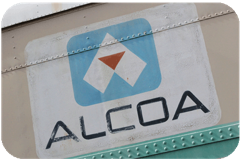 The Dow Jones Industrial average is often considered a bellwether for the economy. This stock index of 30 large publicly traded American companies offers a snapshot of the nation’s fiscal wellbeing for analysts and day traders alike. Regardless of its popularity, however, the Dow is hardly perfect. Deciding which companies comprise the index is a delicate process that sometimes omits major players. For instance, a couple years ago we shared a story in the newsletter about Apple’s absence from the Dow, a matter that some found inconceivable for a company valued at $415 billion.
The Dow Jones Industrial average is often considered a bellwether for the economy. This stock index of 30 large publicly traded American companies offers a snapshot of the nation’s fiscal wellbeing for analysts and day traders alike. Regardless of its popularity, however, the Dow is hardly perfect. Deciding which companies comprise the index is a delicate process that sometimes omits major players. For instance, a couple years ago we shared a story in the newsletter about Apple’s absence from the Dow, a matter that some found inconceivable for a company valued at $415 billion.
While Apple remains too unwieldy for the Dow, strategists at the index determined three companies that nonetheless reflect growing portions of America’s economy. On September 20 the Dow added Nike, Visa and Goldman Sachs to its prestigious roster. In order to make room for the new guys, though, the index decided to ditch Bank of America, Hewlett-Packard and Alcoa on account of their underperforming stocks. As the Dow is weighted by price, that means the companies with the highest valued stocks hold the most sway over the benchmark. The three outgoing companies comprised only 3 percent of the total average, making their impact on the index as a whole minimal.
Besides booming stock prices, the Dow’s freshman entrants also diversify the index to include a better mix of industries. But for the companies on the way out, the change merely serves to highlight greater problems. Alcoa, a Dow fixture for more than 50 years, left the index after falling 7 percent this year and selling at a paltry average of about $8 per share. The move represents the Dow’s biggest shakeup since 2004 when AT&T, Kodak and International Paper made way for Verizon, Pfizer and AIG. Still, while no doubt a major change, this latest substitution is unlikely to have much of an effect on prices of individual stocks. “Despite the popularity of the Dow Jones Industrial Average in the press, it’s a lot less significant than an addition to the Russell 2000 or an addition to the S&P 500, because it’s just not an index that institutions benchmark to,” says an analyst at Credit Suisse Group.
Questions:
- Is the Dow Jones Average a good gauge of how individual stocks will move?
- Is the 30-company Dow too small to get a fair measure of the market’s movement?
Source: Matt Jarzemsky and Colin Barr, “Alcoa, H-P and Bank of America to Be Dropped from the Dow Jones,” The Wall Street Journal, September 11, 2013. Photo courtesy of Josh Hallett.
